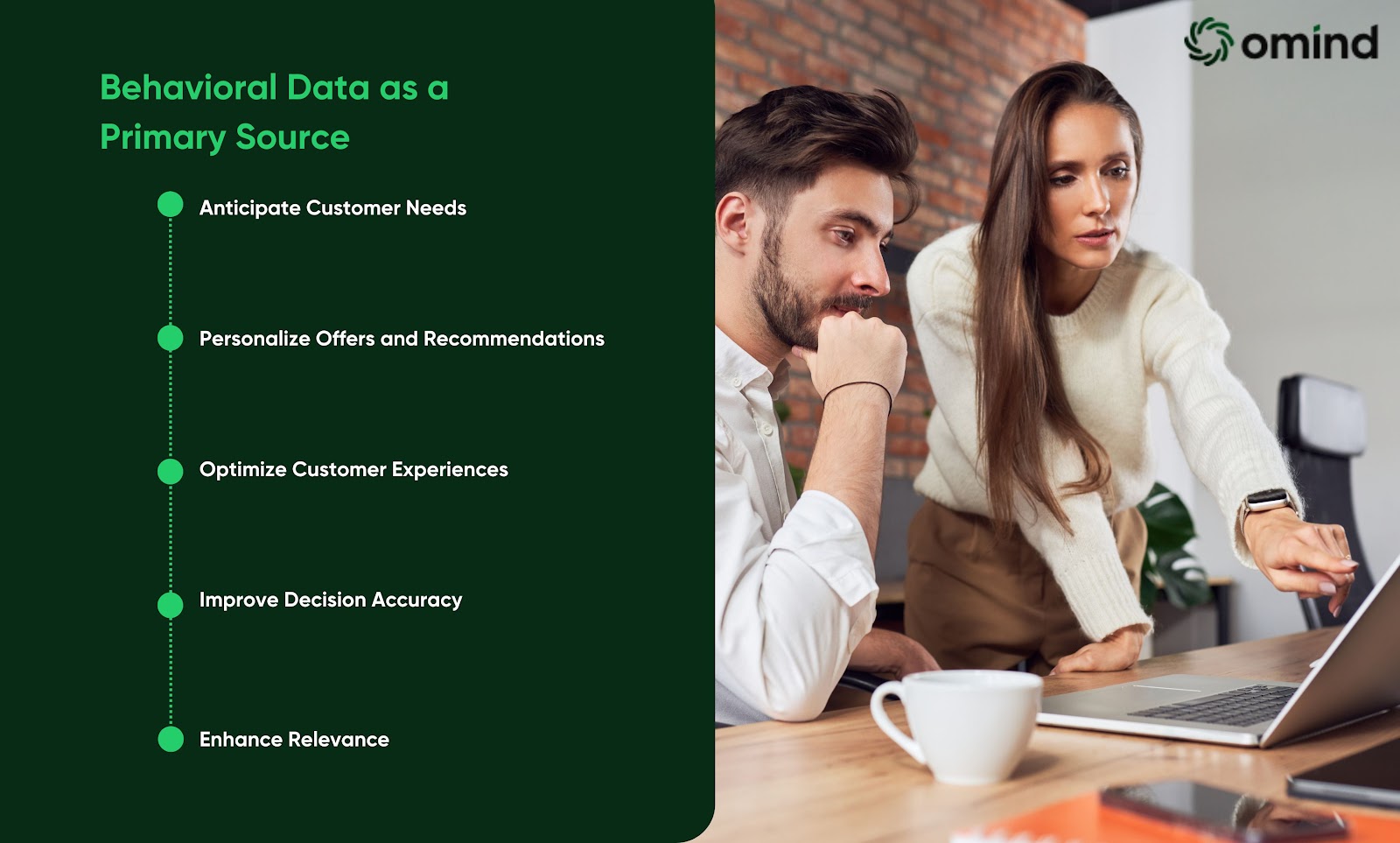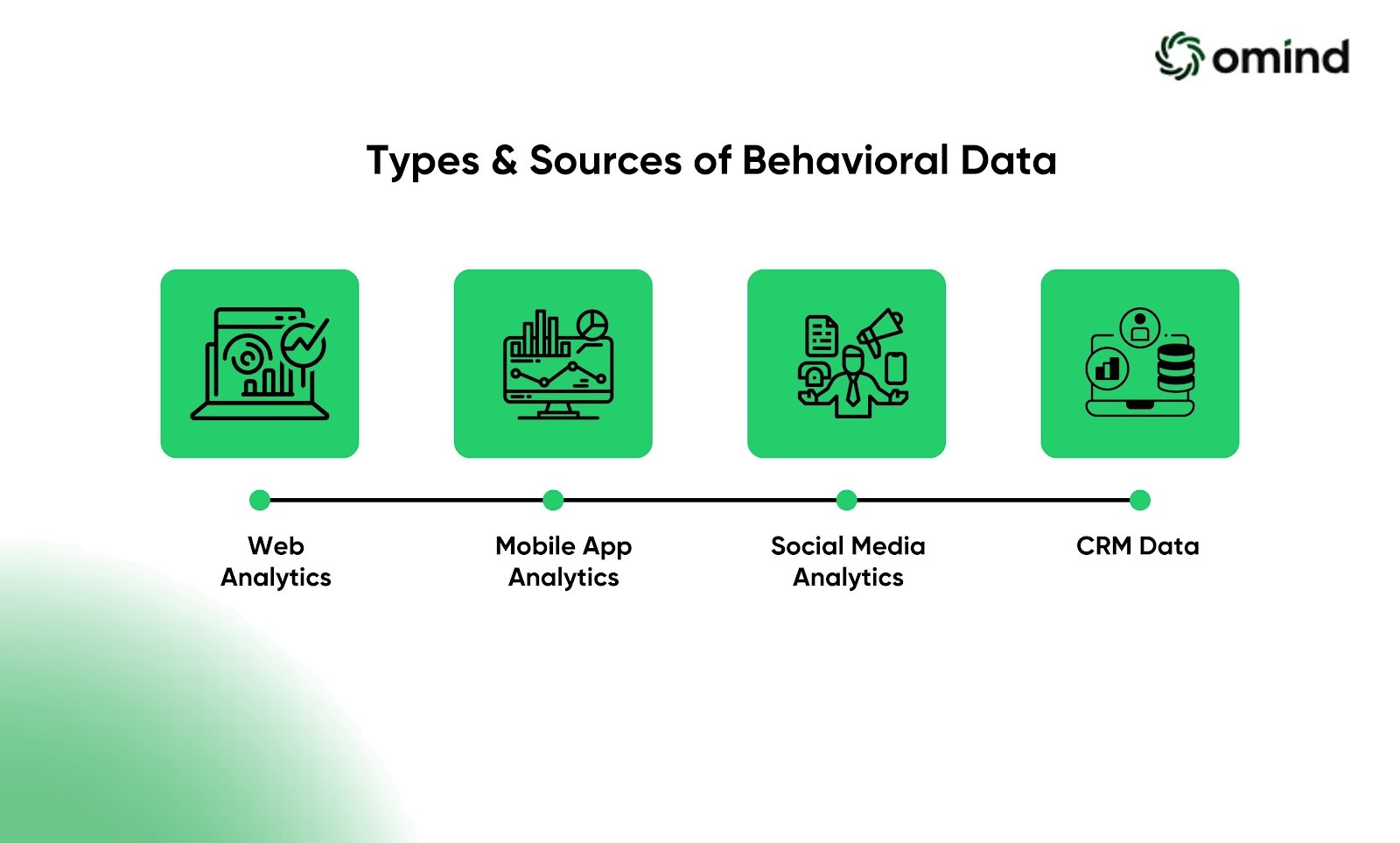Real-time decisioning is the art and science of making rapid, informed choices based on immediate data. It is more or less a departure from older methods of retrospective analysis. The impact on customer experience and operational efficiency is profound. By understanding the challenges and opportunities inherent in this domain, organizations can harness the power of real-time decisioning to drive growth and enhance customer experiences.
Let’s take a closer look at real-time decisioning, examining the critical role of data, the technological underpinnings, and the tangible benefits that early adopters have realized.
Real-Time Data and Its Sources
For organizations to respond swiftly to changing conditions and customer needs, they must have access to fresh, up-to-date information. This requires a robust data infrastructure capable of capturing and processing data as it's generated.
Behavioral data, such as website clicks, purchases, and social media interactions, offers invaluable insights into customer preferences and behaviors. By tracking these activities across various channels, businesses can piece together a comprehensive view of the customer journey. Understanding the emotional context behind customer interactions provides an even richer understanding of customer sentiment and needs. This combination of data forms the foundation for intelligent, real-time decisions.
Technological Requirements and Challenges
Processing vast volumes of real-time data at breakneck speed requires scalable infrastructure capable of handling the immense computational load. This necessitates a shift from traditional batch processing, where data is analyzed in fixed intervals, to architectures that can handle continuous data flow. Organizations must build systems that are efficient and also resilient to failures. Reliability and fault tolerance are therefore paramount in preventing disruptions and maintaining the flow of critical insights.
The complexity of real-time data processing also introduces challenges such as data quality, latency, and system capacity. Overcoming these hurdles requires a combination of advanced technologies, robust data management practices, and a deep understanding of the underlying business requirements.
Lastly, digital channels like websites and mobile apps are prime candidates for real-time decisioning due to the wealth of behavioral data they generate. However, the return on investment must be carefully considered when selecting channels.
Factors That Affect Real-Time Decisioning
Data Quality: Ensuring data accuracy, completeness, and consistency for reliable decision-making.
System Integration: Connecting disparate data sources and systems to create a unified view of customer information.
Real-Time Infrastructure: Investing in scalable and high-performance technology to process data in real time.
Analytical Capabilities: Developing the ability to extract meaningful insights from real-time data streams.
Organizational Culture: Building a culture that encourages experimentation and rapid decision-making.
Talent Acquisition: Building a team with the necessary data science, engineering, and decision-making skills.
Behavioral Data as a Primary Source

Behavioral data is invaluable for real-time decisioning. By meticulously analyzing patterns and trends within this data, businesses gain invaluable insights into customer preferences, habits, and evolving needs. This knowledge allows companies to:
Anticipate Customer Needs: Predict future requirements based on past behavior, allowing for proactive actions.
Personalize Offers and Recommendations: Tailor marketing messages and product suggestions to individual preferences, increasing engagement and conversions.
Optimize Customer Experiences: Identify pain points and areas for improvement, leading to enhanced customer satisfaction.
Improve Decision Accuracy: Make data-driven choices that align with customer expectations and behavior.
Enhance Relevance: Deliver timely and pertinent information that resonates with customers.
The Future of Real-Time Decisioning
Real-time decisioning is poised for significant growth. As technology advances and data volumes explode, the opportunities for innovation will multiply. Organizations that embrace this paradigm will gain a competitive edge. By investing in the right data, infrastructure, and talent, businesses can unlock new levels of customer satisfaction and operational efficiency.
Key Data Types for Real-Time Decisioning

Transactional Data: Records of sales, purchases, and other financial transactions.
Product Data: Information about products, including inventory levels, pricing, and features.
Customer Data: Demographic, geographic, and psychographic information about customers.
Behavioral Data: Website visits, app usage, social media interactions, and purchase history.
Location Data: Real-time location information from mobile devices and other sources.
IoT Data: Data generated by connected devices, such as sensors and wearables.
Challenges in Adopting Real-Time Approaches
Adopting real-time approaches presents several challenges. Organizations must move from relying on historical data to understanding real-time insights. Ensuring data accuracy, completeness, and consistency is crucial. Integrating disparate data sources and systems into a cohesive platform is also essential. Real-time data processing demands robust infrastructure capable of handling massive data volumes at lightning speed.
General Significance and Impact on Decision Making
By harnessing the power of live data, businesses can start to plan for their operations well ahead of time, and at much faster speeds than before. This rapid-fire approach unlocks opportunities to revolutionize customer experiences, streamline operations, and outpace competitors. Here’s a few ways real-time data has made an impact in the business sphere.
Enhanced Customer Experiences: Delivering personalized offers and recommendations based on real-time customer behavior encourages stronger customer relationships and drives loyalty.
Optimized Operational Efficiency: By analyzing real-time data, organizations can streamline processes, allocate resources effectively, and reduce operational costs.
Mitigated Risks: Timely interventions based on real-time insights can prevent errors, minimize waste, and safeguard against potential threats.
Competitive Advantage: The ability to make swift, data-driven decisions positions organizations at the forefront of their industries, enabling them to outmaneuver competitors.
Types and Sources of Behavioral Data

Behavioral data offers a rich tapestry of insights into customer behavior and preferences. To harness its full potential, organizations can tap into various data sources:
Web Analytics: This includes website traffic patterns, user clickstreams, and conversion data, providing valuable information about user behavior and engagement.
Mobile App Analytics: By tracking app usage, in-app purchases, and push notification interactions, businesses can gain insights into customer preferences and app engagement.
Social Media Analytics: Analyzing likes, shares, comments, and sentiment expressed on social media platforms offers valuable clues about brand perception and customer sentiment.
CRM Data: Customer relationship management systems house a wealth of information about customer interactions, purchase history, and preferences, providing a holistic view of customer behavior.
The Future Of Data
By adopting the power of data and advanced technologies, organizations can transform the way they interact with customers and improve their operations. While challenges persist, technology continues to evolve and the potential for real-time decisioning will only expand: Making it imperative for businesses to embrace this paradigm shift.
If you’d like to get a peek into the future of real-time data analytics and operations, Omind invites you to try out our AI-powered solutions for exceptional CX and BX. Click here to schedule a demo.
AUTHOR
Team Omind
Empowering Businesses with Unified Customer Experience Platform, Leveraging Advanced AI and Intelligent Automation
PRODUCT
Unified CXM
Share LINK
Related Blogs




